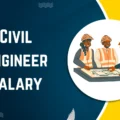Master’s Degree ROI for Civil Engineers: 2025 Guide (USA vs. EU vs. Australia)

Master’s Degree ROI, Civil engineering is evolving faster than ever. With smart cities, climate-resilient infrastructure, and AI-driven design reshaping the industry, employers are prioritizing advanced expertise. A bachelor’s degree might land you a job, but a master’s could be your ticket to leadership roles, specialized projects, and 20–50% higher salaries by 2025. But is the ROI worth the time and debt? The answer depends on where you work—and where you want to go.
In the US, federal infrastructure bills are funneling $1.2 trillion into roads, bridges, and clean energy, creating demand for engineers with niche skills. Meanwhile, Europe’s Green Deal mandates carbon-neutral construction by 2050, favoring graduates with sustainability specializations. Australia’s booming renewable energy sector and urban expansion projects offer similar opportunities. But each region has unique salary ceilings, tuition costs, and career timelines.
This guide dives into 2025’s most reliable data, comparing the ROI of a master’s degree for civil engineers in the USA, EU, and Australia. You’ll learn which specializations pay the most, which universities offer the best ROI, and how to pair your degree with software skills like BIM (Revit), STAAD.Pro, and ANSYS to maximize earnings.
Spoiler: In some cases, certifications (like a PE license) might offer better returns than a full degree. But for engineers eyeing roles in AI-driven design or global infrastructure policy, a master’s could be non-negotiable. Let’s break it down.
Why a Master’s Degree in Civil Engineering? The 2025 Perspective
By 2025, the global civil engineering market will exceed $12.3 trillion, driven by urbanization and climate adaptation projects (Global Market Insights, 2023). But competition is fierce. A master’s degree does three things:
-
Specializes Your Skills: Think AI-augmented design, sustainable materials, or smart infrastructure.
-
Accelerates Licensure: In the EU and Australia, advanced degrees often shorten the path to Chartered status.
-
Boosts Salary: US engineers with a master’s earn **112,000+∗∗vs.112,000+∗∗vs.85,000 for bachelor’s holders
However, tuition costs vary wildly. A degree from Stanford ($60,000/year) demands a different ROI calculation than Germany’s TU Munich (€3,000/year). Let’s dissect the numbers region by region.
Master’s Degree ROI: USA vs. Europe vs. Australia (2025 Data)
United States
-
Avg. Tuition Cost: 30,000–30,000–70,000 total
-
Salary Premium: 25–35%
-
Break-Even Period: 4–7 years
The US infrastructure boom prioritizes engineers with master’s degrees in transportation systems or environmental engineering. MIT and UC Berkeley graduates report starting salaries over $115,000 in cities like NYC and San Francisco.
Top Specializations:
-
Structural Engineering (PE licensure + ANSYS proficiency)
-
Smart Cities (IoT integration, BIM expertise)
Software Skills to Learn:
-
Revit (BIM collaboration)
-
STAAD.Pro (structural analysis)
European Union
-
Avg. Tuition Cost: €0–€24,000 total
-
Salary Premium: 15–25%
-
Break-Even Period: 3–5 years
EU countries like Germany and Sweden offer low-cost (or free) tuition for EU students. Graduates from ETH Zurich or Delft University of Technology earn €65,000–€90,000 in roles tied to the Green Deal.
Top Specializations:
-
Renewable Energy Systems (wind/solar infrastructure)
-
Circular Economy (material reuse strategies)
Software Skills to Learn:
-
AutoCAD Civil 3D (site design)
-
SAP2000 (structural modeling)
Australia
-
Avg. Tuition Cost: AU40,000–AU40,000–AU100,000 total
-
Salary Premium: 20–30%
-
Break-Even Period: 5–8 years
Australia’s focus on coastal resilience and mining infrastructure rewards graduates with master’s degrees in geotechnical engineering or water resources. University of Melbourne alumni average AU$130,000 in cities like Perth and Brisbane.
Top Specializations:
-
Climate Adaptation (flood modeling, coastal engineering)
-
Mining Infrastructure (drone surveying, GIS)
Software Skills to Learn:
-
12d Model (civil design)
-
Plaxis (geotechnical analysis)

Isn’t Worth It
-
You’re Already Licensed: In the US, a PE license often matches a master’s salary bump.
-
High Debt Load: Australian tuition can exceed AU$100k—calculate repayment timelines carefully.
-
Industry Demand: If your region values certifications (like PMP®) over degrees, prioritize those.
4 Must-Read Books to Prep for a Master’s Program
-
“Civil Engineering Reference Manual” by Michael R. Linde burg
-
Why Read?: PE exam prep goldmine.
-
-
“Sustainable Infrastructure: Principles into Practice” by S. Bryson
-
Why Read?: Aligns with EU Green Deal priorities.
-
-
“Structures: Or Why Things Don’t Fall Down” by J.E. Gordon
-
Why Read?: Simplifies complex structural concepts.
-
-
“BIM for Dummies” by Stefan Mordue et al.
-
Why Read?: Master Revit and BIM workflows.
-
The Verdict: Is a Master’s Degree Worth It in 2025?
-
USA: Yes, if you target high-growth sectors (e.g., smart cities) and minimize debt.
-
EU: Almost always—low tuition and Green Deal demand create strong ROI.
-
Australia: Conditional. Prioritize universities with industry partnerships.
Pair your degree with certifications (LEED AP, PMP®) and software mastery to dominate niche markets.
Ready to Decide? Master’s Degree ROI
References:
-
European Green Deal: https://ec.europa.eu/info/strategy/priorities-2019-2024/european-green-deal_en
-
Engineers Australia Salary Report: https://www.engineersaustralia.org.au
-
Global Infrastructure Trends: https://www.gihub.org



